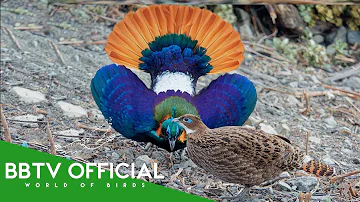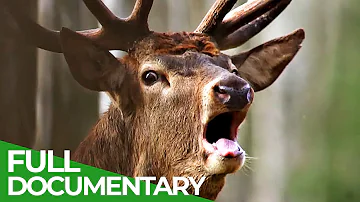
Brussels Griffon
Canis lupus familiaris

Meet the Brussels Griffon
The Brussels Griffon is a small, intelligent, and lively toy dog breed that originated in Belgium. Known for its expressive, almost human-like face and distinctive beard, this breed comes in both rough and smooth-coated varieties. Brussels Griffons are affectionate companions, thriving on close human interaction and forming strong bonds with their owners. Their alert and curious nature makes them excellent watchdogs, despite their diminutive size. With a spirited personality and a touch of stubbornness, they are both charming and entertaining pets.
Classification
Mammal
Habitat
Domestic (Companion animal in urban and suburban homes)
Diet
Omnivore
Lifespan
12-15 years
Conservation
Least Concern
Weight
3.5–6 kg (8–13 lbs)
📖Fascinating Facts
Distinctive Appearance
The Brussels Griffon is best recognized for its large, soulful eyes and pronounced beard, giving it an almost human-like expression.
Perfect Companion
These dogs are exceptionally loyal and tend to form strong bonds with a single person, often following their owner from room to room.
Movie Star
A Brussels Griffon named Verdell played a memorable role alongside Jack Nicholson in the film 'As Good as It Gets,' boosting the breed's popularity.
📋Detailed Description
The Brussels Griffon is a compact toy breed, typically weighing between 3.5 to 6 kg (8–13 lbs) and standing 18–25 cm (7–10 in) at the withers. Its most distinctive feature is its domed head, short upturned nose, and large, wide-set eyes that give it an expressive, almost human-like appearance. The breed comes in two coat types: rough (wiry and dense with a prominent beard and whiskers) and smooth (short and glossy, known as the Petit Brabançon). The tail is typically set high and carried upward, often docked in countries where this practice is permitted. Brussels Griffons possess a sturdy, well-muscled body for their size, with a short back and level topline. Their gait is purposeful and confident, reflecting their alert and lively temperament. The breed is renowned for its intelligence, curiosity, and sensitivity to human emotions, often forming intense bonds with their primary caregivers. Socially, they thrive in close-knit environments and may exhibit separation anxiety if left alone for extended periods. Despite their small stature, they are bold and can be assertive with larger dogs, displaying a spirited and sometimes stubborn personality. Their vocalizations are varied, including barks, grumbles, and even 'talking' sounds, which they use to communicate with their human companions.
💡 Did you know?
Despite their toy size, Brussels Griffons are related to working terrier breeds and retain a surprising amount of energy and courage.
🔬Research & Sources
Wikipedia Summary
The Griffon Bruxellois or Brussels Griffon is a breed of toy dog, named for their city of origin of Brussels, Belgium. The Griffon Bruxellois may refer to three different breeds, the Griffon Bruxellois, the Griffon Belge and the Petit Brabançon. Identical in standard except for coat and colour differences, in some standards they are considered varieties of the same breed, much like Belgian Shepherd Dogs.
Last Modified: 3/15/2025
🎭Behavior & Social Structure
Brussels Griffons are highly social and thrive on human companionship, often following their owners from room to room. They are alert and quick to sound the alarm at unfamiliar noises, making them effective watchdogs despite their diminutive size. Playful and energetic, they enjoy interactive games and short bursts of activity but are equally content to cuddle and rest. Their intelligence makes them responsive to positive reinforcement training, though they can be independent and occasionally stubborn. They generally get along well with other dogs and pets if properly socialized from an early age. Griffons are sensitive to harsh corrections and require gentle, consistent guidance. Their feeding behavior is typical of small companion breeds, with a preference for high-quality, protein-rich diets; they may be prone to obesity if overfed. Daily routines include periods of play, short walks, and significant time spent in close proximity to their human family.
👶Reproduction & Life Cycle
Brussels Griffons reach sexual maturity around 8–12 months of age. The breed is known for relatively small litters, typically producing 2–4 puppies per whelping. The gestation period averages 63 days. Due to their brachycephalic (short-nosed) skull structure and relatively large-headed puppies, Griffons may experience whelping difficulties, and cesarean sections are not uncommon in veterinary practice. Females exhibit attentive maternal care, nursing and grooming their young intensively during the first weeks. Puppies are born blind and deaf, opening their eyes at around 10–14 days. Socialization and gentle handling during the early developmental period are crucial for producing well-adjusted adults. There is no strict breeding season, as domestic dogs can breed year-round, but responsible breeders typically plan litters to avoid extreme weather conditions.
🛡️Adaptations & Survival
The Brussels Griffon exhibits several adaptations suited to its role as a companion animal. Its compact size and moderate exercise needs make it well-adapted to urban living. The breed’s expressive face and large eyes are the result of selective breeding for human-like features, enhancing its ability to communicate with people. The rough coat provides some protection against cold and minor abrasions, while the smooth coat is easier to maintain. Their acute hearing and alertness are behavioral adaptations that make them effective watchdogs. The breed’s intelligence and sensitivity to human cues are evolutionary specializations resulting from centuries of close association with people, originally as vermin hunters and later as cherished pets.
📚Research Sources
🎨Cultural Significance
The Brussels Griffon has a rich cultural history, originating in 19th-century Belgium where it was bred from small terrier-like dogs used to control vermin in stables. It gained popularity among the Belgian nobility and was later featured in European art and literature. The breed achieved international fame after appearing in the 1997 film 'As Good as It Gets,' which led to a surge in popularity in North America. The Griffon is often associated with charm, wit, and loyalty, and is a symbol of companionship and affection in modern culture. It is recognized by major kennel clubs worldwide, including the Fédération Cynologique Internationale (FCI), the American Kennel Club (AKC), and the Société Royale Saint-Hubert (Belgium).
🔬Recent Research & Discoveries
Recent genetic studies have explored the ancestry of the Brussels Griffon, confirming its close relationship to other Belgian toy breeds and its descent from the Smousje, a now-extinct rough-coated stable dog. Ongoing research focuses on the genetic basis of brachycephaly and associated health issues, aiming to improve breeding practices and reduce the incidence of respiratory and ocular problems. Behavioral research highlights the breed’s advanced social cognition and ability to interpret human emotional cues, making it a valuable model for studies on canine-human bonding. Veterinary studies continue to monitor breed-specific health concerns, with recommendations for regular eye, heart, and airway screenings.
🎥Wildlife Videos

30 Most Beautiful Creatures On Earth (Order Galliformes) | Wildlife Documentary | BBTV Official
In the heart of the world's most remote forests and rugged highlands, where mist lingers over ancient trees and the wilderness ...
BBTV Official

Vulture's Feast | Nature - Planet Doc Full Documentaries
Nature documentary. In Montfrague National Park in Spain, attended the feast of vultures. It is the "cleaning" of the forest.
Planet Doc Full Documentaries

Discover the Surprising Nature of a Meadow - Full Documentary
Some of the species featured: Carrion crow Roe deer and fawn Badger Barn owl Meadow ant Vetch aphid Red-tailed mason bee ...
Stephen de Vere

Europe's Great Wilderness | Episode 2: Europe's Green Heart | Free Documentary Nature
Europe's Great Wilderness - Episode 2: Europe's Green Heart | Wildlife Documentary Watch 'Europe's Great Wilderness - Episode ...
Free Documentary - Nature

The Incredible Scottish Highlands (4K Documentary) | Our World
Narrated by Ewan McGregor, this landmark series gives a beautiful portrait of life in the Scottish Highlands, following the wildlife ...
Our World

LEGENDS OF THE RED DUST | Tsavo’s Predators Unleashed #naturedocumentaries | Wild Nature
LEGENDS OF THE RED DUST | Tsavo's Predators Unleashed #naturedocumentaries | Wild Nature Welcome to a wild and ...
WILD NATURE - Nature animal documentary
🌍Habitat Information
The Brussels Griffon typically inhabits Domestic (Companion animal in urban and suburban homes) environments. Brussels Griffons have adapted to their environments with specialized features and behaviors.
Primary Habitat:
Domestic (Companion animal in urban and suburban homes)
More detailed habitat information will be available soon.
🛡️Conservation Status
The Brussels Griffon is currently classified as Least Concern. Conservation efforts are crucial for preserving this species for future generations.
Common Threats:
- 🏠Habitat loss and fragmentation
- 🌡️Climate change impacts
- 🎯Hunting and poaching
- 🏭Human-wildlife conflict
⚠️Threats & Conservation Challenges
The Brussels Griffon faces few threats in terms of population decline, as it is a popular companion breed with a stable global population. However, the breed is prone to several health challenges, including brachycephalic airway syndrome, eye injuries due to prominent eyes, and dental issues. Overbreeding and poor breeding practices can exacerbate these health problems. The breed’s sensitivity to anesthesia and heat stress requires careful veterinary management. Human impact is generally positive, as responsible breeders and breed clubs promote health screening and genetic diversity. However, trends in 'designer' breeding and demand for specific physical traits can lead to welfare concerns. There are no significant conservation challenges, but ongoing education about responsible ownership and breeding is essential.
🔬Scientific Classification
Scientific Name
Canis lupus familiaris
Classification Hierarchy
🔍 About Taxonomic Classification
Taxonomic classification is a hierarchical system used by scientists to classify and organize living organisms based on shared characteristics and evolutionary relationships.
The system moves from broad categories (Kingdom) to increasingly specific ones, with each animal's scientific name typically consisting of its Genus and species.
📝Community Notes
Share your observations and insights about the Brussels Griffon with our community of wildlife enthusiasts.
Join Our Community
Sign in to share your observations and connect with fellow wildlife enthusiasts.
Sign In to ContributeNo community notes yet
Be the first to share your observations about the Brussels Griffon!
Explore Brussels Griffon
Select a tab above to learn more about this amazing animal.
📸Photo Gallery
No photos available for this animal yet.
🌟Discover More Wildlife
Continue your journey of discovery with more fascinating animals from our database
